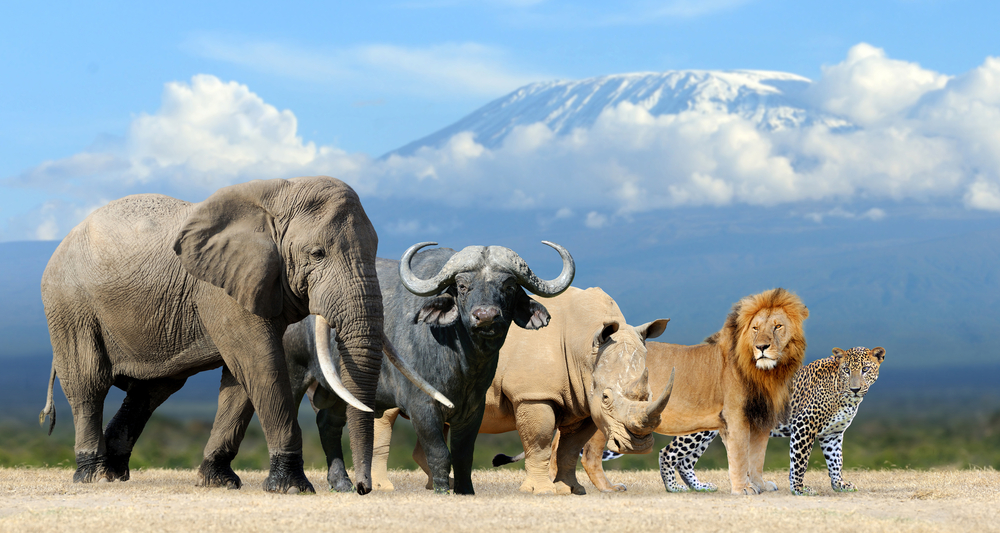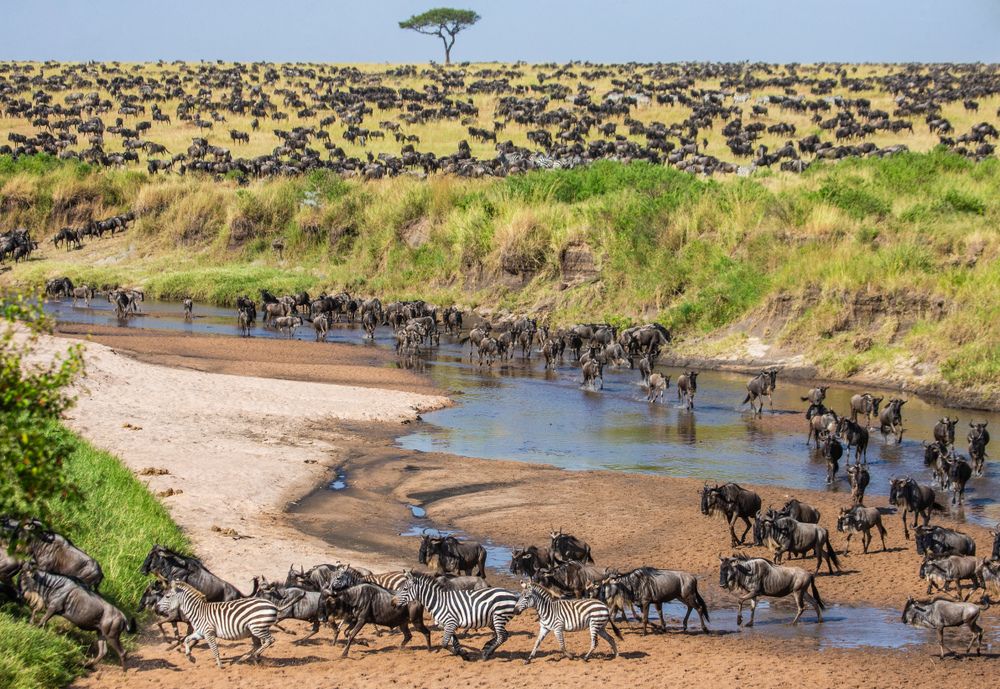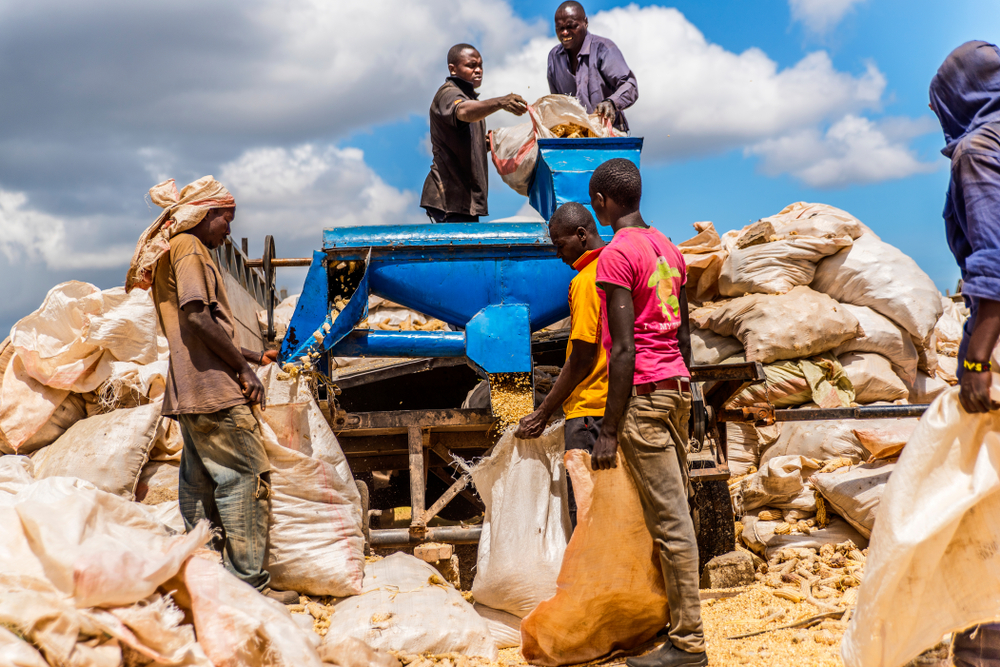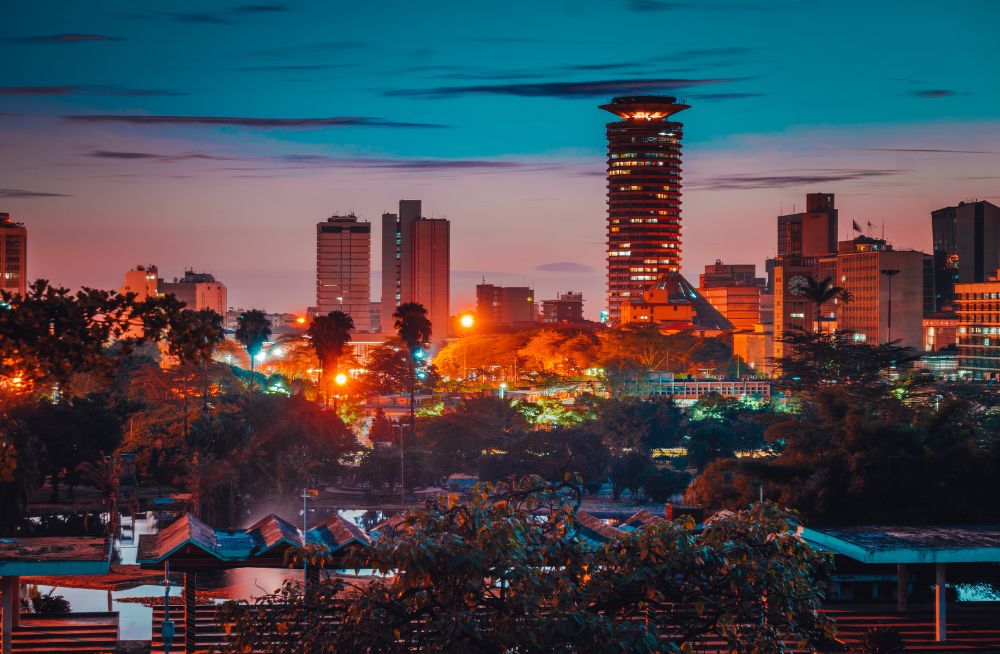Although it’s a young democratic Third World country whose economy has recently risen to lower-middle-income status, the Republic of Kenya is one of the most promising countries with a rich blend of culture, natural attractions, and history to witness.
From her generous citizens and incredible two-season weather to diverse plateaus and thousands of land and marine animal species, there’s no shortage of amazing Kenya facts to explore.
Here are some incredible facts about the East African country bordered by Somalia and the Indian Ocean to the east, Uganda and Lake Victoria to the west, Ethiopia and South Sudan to the north, and Tanzania to the south.
1. Kenya Is Named After A Mountain
Once a British Protectorate, Kenya borrows its name from Mount Kenya, the snow-capped tropical mountain astride the Equator, which stands as the country’s highest mountain and Africa’s second tallest at 5,199 meters (17,058 feet) after Mount Kilimanjaro (5,895 meters or 19,340 feet).

The traditional name for the mountain is “Kirinyaga” or “Kirima Kia Nyaga”, which means the “Mountain of the Ostriches“.
Three Kenyan tribes—the Kikuyu, the Ameru, and the Aembu regard the mountain as the holy dwelling place for God, whom they call “Mwene Nyaga”, meaning the “Owner of the Ostriches”.
It’s believed that the famous Chief Kivoi wa Mwendwa, a Kamba long-distance trader, told Ludwig Krapf that the mountain’s name is “Kinyaa” (which is how the Akamba pronounced “Kirinyaga”).
Krapf noted the name down as “Kenia”, which metamorphosed into “Kenya” through pronunciation.
2. Kenya Has 7 World Heritage Sites
Despite being relatively small, Kenya is home to seven natural and cultural UNESCO world heritage sites recognized by 2018, with seventeen more proposed for upgrading to the status in the future.
The three natural world heritage sites in the Republic of Kenya include:
- The Lake Turkana National Parks (since 1997 and 2001), which comprises Lake Turkana, Central Island National Park, South Island National Park, and Sibiloi National Park.
- The Mount Kenya National Park and Natural Forest (since 1997 and 2013)
- The Kenya Lake System in the Great Rift Valley (since 2011)
The four Kenyan cultural world heritage sites include:
- Lamu Old Town (since 2001), an ancient Swahili settlement known for its narrow streets and structurally simple abodes of mangrove timber and coral stone.
- Sacred Mijikenda Kaya Forest (since 2008)
- The legendary Fort Jesus (since 2011)
- The Thimlich Ohinga Archaeological Site (since 2018)
Jointly operated by the National Museums of Kenya and the Kenya Wildlife Service, the seven heritage sites are a sight to behold, each in its own right.
3. Over 60 Languages Are Spoken In Kenya
Kenya is an ethnically diverse country with forty-four recognized ethnic groups, the most recent addition being the Asians recognized in 2017 by the now retired fourth president, Uhuru Muigai Kenyatta.
The most prominent and populous Kenyan tribes include the Kikuyu, Luhya, Luo, Kalenjin, and Maasai, all of which have over one million people. The country’s capital city, Nairobi, is one of the major melting points for ethnic groups.
Some tribes, such as the Luhya and Kalenjin, comprise several sub-tribes, which explains why there are over 60 spoken languages out of 44 tribes.
The official languages remain English and Swahili. Sheng is also an upcoming language, blending English, Swahili, and local tribal languages.
The words “nyama choma”, “safari”, “sambaza” have found their way to the Oxford English Dictionary from the Swahili language of East Africa, while “collabo” (short for “collaboration”) was picked from Sheng.
4. Kenya’s Home To All The Big Five
Kenya has been named the world’s leading safari destination for several years by the World Travel Awards. The country is home to sprawling savannahs and over 50 national parks and reserves, the habitats for hundreds of trees and animal species.

The country’s largest city, Nairobi, hosts the Nairobi National Park, the world’s only national park in a city. You can catch a view of the Big Five game at the park—the African Lion, the African Elephant, the African Leopard, the African rhinoceros, and the African Buffalo.
Other attractions from the parks and reserves include 1,132 bird species, flamingoes, cheetahs, giraffes, snakes, and species of indigenous trees and plants.
5. Kenya’s Home To World’s Best Marathoners
Big names in long-distance races or marathon hail from the Kalenjin tribe of the Great Rift Valley, such as Eliud Kipchoge of the “No Human Is Limited” 1:59 marathon challenge fame.
Kenyan long-distance runners are a fascination worldwide for the many world records they break and the gold medals they win. This fame has given rise to the new Kenyan verb, “to kipchoge”, meaning “to run very fast”.
Scientists are still trying to find out if it’s something about their high-altitude environment, genes, or diet that makes the marathoners such great runners!
Other famous sports in Kenya include soccer, bullfighting in Kakamega, rugby, cockfighting in Western Kenya, volleyball, and the Safari Rally Kenya.
6. Kenya Hosts The Great Wildebeest Migration
The Great Wildebeest Migration has always been a sight to behold as 1.7-2 million wildebeest, elands, and zebras cross the crocodile-infested Mara River in search of greener pastures in the Masai Mara-Serengeti Ecosystem shared between Kenya and Tanzania.

The annual cyclic event takes place between July and October and always attracts thousands of local and international tourists who come to witness one of the natural wonders of the world.
7. The First African Nobel Winner Was Kenyan
In 2004, the legendary Wangari Muta Maathai (God bless her soul) broke barriers to become the first African woman to win the Nobel Peace Prize for her activism in promoting peace, democracy, and sustainable development.
The Greenbelt Movement, founded by the Nobel Laureate christened “The Mother of Trees”, has been at the forefront of conserving the environment through the planting and preservation of trees in Kenya.
8. Refusing A Cup Of Chai Is Being Rude
Kenyan people are among the most generous in the world, according to a 2021 report by the World Giving Index. A Kenyan will hardly consider themselves a good host if they haven’t offered you tea yet, locally known as a cup of chai.
Interestingly, it’s considered rude and an insult to reject the hospitality of a Kenyan host, even though paradoxically, most hosts expect you to pretend not to want anything when they offer you tea or food!
If you visit the country and hear people talking of tea seemingly out of context, they could be euphemistically referring to a bribe. Kenyans use the word to refer to a lawful or unlawful appreciation for small favors.
9. Maize Is Kenya’s Staple Food
Talking of food, saying that Kenya’s staple food is maize (corn) may sound like an understatement, given the many ways Kenyans eat corn.

The most common way maize is religiously eaten in the country is ugali, a thick solid paste made by cooking maize flour in boiling water.
Kenyans eat ugali with famous local foods like fish, chicken, nyama choma (grilled/barbecue meat), green vegetables, beans, and mursik—the famous Kalenjin smoked milk offered to Kenyan marathoners.
Corn is also eaten boiled, roasted, or as “githeri” a boiled mixture of corn and beans or other suitable legumes.
10. Your Rose Could Be Kenyan
Imagine Valentine’s Day without all the roses—please don’t! Christened the “Flower Garden of Europe”, Kenya is the world’s third largest producer of roses.
The republic is also a leading producer and exporter of other types of fresh flowers, avocadoes, tea, and coffee. A huge chunk of the country’s gross domestic product comes from agriculture and the tourism industry.
11. Kenya’s Coastline Spans 536 Kilometers
The Kenyan coastline along the Indian Ocean stretches 536 kilometers (about 333 miles) with turquoise waters and private and public beaches filled with fine white sand.
Local and international tourists visit the coastal towns of Mombasa, Lamu, and Malindi to swim in the ocean’s saline waters, play in the sand, bask in the tropical sun, and savor delicious Swahili dishes.
12. The Great Rift Valley Runs Through Kenya
The Kenyan section of the Great Rift Valley is called the Central Rift Valley. It is a rich biodiversity of escarpments, vegetation, animals, and fresh water and soda lakes such as Lake Bogoria, Lake Elementaita, Lake Naivasha, Lake Nakuru, Lake Baringo, and Lake Turkana—Kenya’s largest lake and the world’s largest desert lake at 6,405 square kilometers (2,473 square miles).

